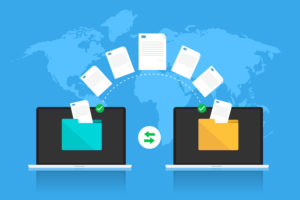

(Yurchanka-Siarhei/Shutterstock)
It’s no secret that deep learning lets data science practitioners reach new levels of accuracy with predictive models. However, one of the drawbacks of deep learning is it typically requires huge data sets (not to mention big clusters). But with a little skill, practitioners with smaller data sets can still partake of deep learning riches.
Deep learning has exploded in popularity, with good reason: Deep learning approaches, such as convolutional neural networks (used primarily for image data) and recurrent neural networks (used primarily for language and textual data) can deliver higher accuracy and precision compared to “classical” machine learning approaches, like regression algorithms, gradient-boosted trees, and support vector machines.
But that higher accuracy comes at a cost. Deep learning models are much more complex and typically require much more data to deliver better predictions. And of course, running all that data requires more computer horsepower, typically in the form of GPU-equipped clusters. It’s no wonder that the world’s leaning practitioners of deep learning are companies with names like Google, Facebook, and Microsoft, which have a ton of data and compute capacity on which to develop and train advanced predictive models.
Size does matter, but that doesn’t leave mere data mortals out in the cold. With the right techniques, data scientists and machine learning engineers can get in on the deep learning action, but without a huge corpus of training data up front.
One of the technologists with a lot of experience making the most of smaller data is Vaibhav Nivargi, the CTO and co-founder of Moveworks, which develops IT ticket automation software. The company is just three-and-a-half years old and is backed by some of the top venture capitalists in Silicon Valley. But it doesn’t have a ton of IT tickets on which to train its predictive models, which posed a challenge to Nivargi.
“IT tickets are not really the most voluminous types of data,” Nivargi says. “Even if you have a customer with several thousand employees, it’s a relatively infrequent activity to file an IT ticket. The data sets are relatively sparse and small. To be able to leverage more sophisticated techniques, running at very high levels of accuracy and precision, is highly non-trivial.”
Under Nivargi’s watch, Moveworks has swung above its weight and developed deep learning models that are much more accurate and precise compared to traditional machine learning approaches. These three techniques detail how he did it.
Transfer Learning
Transfer learning is arguably the most basic approach to leveraging powerful deep learning approaches when you don’t have the data to develop a more custom solution. At its most basic level, it’s a copy and paste approach: You copy a deep learning model that’s already been developed, but paste your custom code into the last layer that develops the final prediction.
Moveworks adopted BERT, a recurrent network model developed and open sourced by Google for natural language understanding, as the basis for one of the deep learning models it uses to understand the words that its customers use as they interact with an IT help desk.
“Think of transfer learning as fine tuning,” Nivargi tells Datanami. “You already have something that’s reasonably working, but you want to make it work for your use case. You take most of what it has learned, and you just change the last few steps.”
Collective Learning
Collective learning is a technique that can be used to amplify your existing sparse data to generate new data that’s very close to the distribution of real world data. More data, of course, equals better results in a deep learning model.
Using collective learning techniques to boost the available corpus of training data in the computer vision domain is fairly straightforward. “You can take the image and tweak the contrast,” Nivargi says. “Or you can rotate the image or chop off the sides, and now you have 3x to 4x that data.”
It’s trickier to do in the language domain, because you can’t just chop off the end of words or add random words and punctuation. But with enough care in the hands of a knowledgeable practitioner, the collective learning approach can also be used to boost an existing data set and provide more collections of words to feed into the recurrent neural network.
“We have language like ‘I’m trying to set up a meeting with X’ or ‘I’m getting error Y. Can you help me?’” Nivargi says. “You can substitute a meeting with Zoom or WebEx or GoToMeeting, and mix and match the preamble and the problem, and still get data that is very realistic.”
Meta Learning
Meta learning, which is sometimes called n-shot or multi-shot learning, is another powerful data-boosting technique. According to Nivargi, Moveworks uses meta learning to create additional dimensions of the data, which allows the deep learning models to better understand the shape of the data.
Let’s say I see an IT ticket that says ‘I need access to the dashboard so I can publish a metric,’” Nivargi says. “It’s perfectly valid, syntactical English. It’s meaningful. But it’s completely incomplete. We don’t know what kind of dashboard.”
To fill in the blanks and drive toward a greater understanding of what that employee meant, Moveworks employs a meta learning approach that applies context to the statement. The approach uses available metadata to make a guess about what the employee meant.
“You can use an example of what department the employee works in, or the time of day,” Nivargi says. “If the employee in in marketing, there’s a good chance they’re talking about the Salesforce dashboard. If they’re in engineering, there’s a good chance they’re talking about the Jira dashboard.”
DL for the Masses
Collectively, these three techniques let Moveworks specifically amplify this data to a very high volume, Nivargi says.
Transfer learning has a bootstrap phenomenon, where you can start from a strong base and then adapt to your domain,” he says. “Collective learning has a network effective. And meta learning can take data from N dimensions and add several hundred dimensions more. So all of these are cumulatively very, very powerful.”
Moveworks employs a wide variety of supervised and unsupervised machine learning and deep learning models to help understand the meaning of IT help desk tickets. Some models are universal and some are customer-specific and some are ensembles. Like most companies active in data science, it’s found some techniques work well in some domains, while other approaches require completely different approaches.
In the early days of the company, Moveworks hit a wall with traditional machine learning models. One of them was “saturated” at around 82% accuracy. “It would simply not learn above that,” Nivargi says. “The model would plateau.”
After employing some of the transfer learning, collective learning, and meta learning tricks discussed here, Moveworks had enough data to keep the bigger deep learning models flush with data. As a result, the models are more accurate.
“Some of our models now can be deployed in production in the high 90s, 90% to 96% precision, and we can have very high coverage as well,” he says. “So now we can use extremely powerful and sophisticated deep learning techniques without requiring the same kind of inherent data that a Google or Facebook or Microsoft has.”
Related Items:
Deep Learning: The Confluence of Big Data, Big Models, Big Compute
Deep Learning Has Hit a Wall, Intel’s Rao Says
What’s the Difference Between AI, ML, Deep Learning, and Active Learning?
April 25, 2024
- IBM Transforms the Storage Ownership Experience with IBM Storage Assurance
- Cleanlab Launches New Solution to Detect AI Hallucinations in Language Models
- University of Maryland’s Smith School Launches New Center for AI in Business
- SAS Advances Public Health Research with New Analytics Tools on NIH Researcher Workbench
- NVIDIA to Acquire GPU Orchestration Software Provider Run:ai
April 24, 2024
- AtScale Introduces Developer Community Edition for Semantic Modeling
- Domopalooza 2024 Sets a High Bar for AI in Business Intelligence and Analytics
- BigID Highlights Crucial Security Measures for Generative AI in Latest Industry Report
- Moveworks Showcases the Power of Its Next-Gen Copilot at Moveworks.global 2024
- AtScale Announces Next-Gen Product Innovations to Foster Data-Driven Industry-Wide Collaboration
- New Snorkel Flow Release Empowers Enterprises to Harness Their Data for Custom AI Solutions
- Snowflake Launches Arctic: The Most Open, Enterprise-Grade Large Language Model
- Lenovo Advances Hybrid AI Innovation to Meet the Demands of the Most Compute Intensive Workloads
- NEC Expands AI Offerings with Advanced LLMs for Faster Response Times
- Cribl Wins Fair Use Case in Splunk Lawsuit, Ensuring Continued Interoperability
- Rambus Advances AI 2.0 with GDDR7 Memory Controller IP
April 23, 2024
Most Read Features
Sorry. No data so far.
Most Read News In Brief
Sorry. No data so far.
Most Read This Just In
Sorry. No data so far.
Sponsored Partner Content
-
Get your Data AI Ready – Celebrate One Year of Deep Dish Data Virtual Series!
-
Supercharge Your Data Lake with Spark 3.3
-
Learn How to Build a Custom Chatbot Using a RAG Workflow in Minutes [Hands-on Demo]
-
Overcome ETL Bottlenecks with Metadata-driven Integration for the AI Era [Free Guide]
-
Gartner® Hype Cycle™ for Analytics and Business Intelligence 2023
-
The Art of Mastering Data Quality for AI and Analytics
Sponsored Whitepapers
Contributors
Featured Events
-
AI & Big Data Expo North America 2024
 June 5 - June 6Santa Clara CA United States
June 5 - June 6Santa Clara CA United States -
AI Hardware & Edge AI Summit Europe
 June 18 - June 19London United Kingdom
June 18 - June 19London United Kingdom -
AI Hardware & Edge AI Summit 2024
 September 10 - September 12San Jose CA United States
September 10 - September 12San Jose CA United States -
CDAO Government 2024
 September 18 - September 19Washington DC United States
September 18 - September 19Washington DC United States






























